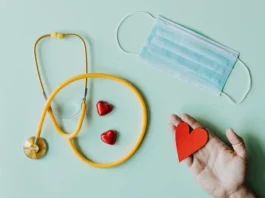Last Updated on March 12, 2024 by admin
Over half of teenage girls and about one-third of teenage boys use unhealthy weight control behaviors. This could be skipping meals or taking laxatives. And, in a study of 14- and 15-year old’s, dieting behaviors were the biggest predictors of developing disordered eating habits.
When it comes to disordered eating, these sorts of signs and symptoms can be crucial to spot.
Disordered eating is a term used to describe a range of irregular eating behaviors that can lead to physical and emotional harm. It is important to recognize disordered eating patterns early on to avoid potential health risks and seek appropriate recovery options. Here are some signs to look out for and steps to take for recovery.
The earlier an eating disorder is detected, the better the chance of recovery.
Table of Contents
Keep reading for tips on recognizing disordered eating patterns and finding recovery options.
Signs Of Disordered Eating
While there are many types of eating disorders, there are some common symptoms that you can look out for. Symptoms can generally be categorized as emotional and behavioral signs or physical signs.
Emotional And Behavioral Symptoms
Behaviors that indicate weight loss or excessive control over food are the primary concern. You should also look out for food rituals, skipping meals, or frequent examination in mirrors, often called body checking.
Some disorders, such as Avoidant Restrictive Food Intake Disorder (ARFID) have specific behaviors to watch out for. Someone suffering from an ARFID eating disorder might have a limited range of preferred foods. Over time, that range can shrink. They might also have fears of choking or vomiting.
Physical Symptoms
Many often assume that the most recognizable physical symptom of eating disorders is dramatic weight loss. While this can be true in some cases, rapid or frequent fluctuations in weight, up or down, can be a cause of concern.
Other physical symptoms to keep an eye out for include feeling cold all the time, sleep problems, dry skin or hair, and brittle nails. These physical problems pop up because the body isn’t getting the fuel and nutrients it needs.
With disorders like bulimia, individuals might also have dental problems. The acid in vomit can erode the enamel on teeth.
- Obsession with food and weight
- Anxiety around mealtimes
- Avoiding certain foods or food groups
- Skipping meals or fasting
- Binge eating or purging
- Changes in weight and body shape
- Preoccupation with appearance and body image
Seeking Eating Disorder Treatment
If you’re noticing signs of disordered eating in yourself or someone else, it’s important to try and find treatment. Getting a diagnosis is the first step on the path to eating disorder recovery.
Anyone suffering from an eating disorder deserves treatment. In specific cases, it can be particularly crucial, such as pregnancy eating disorders.
Treatment usually involves multifaceted counseling. This includes psychological counseling with an eating disorder therapist plus nutrition counseling. Effective treatment must address symptoms, medical consequences, and the psychological motivations behind disordered eating.
Eating disorder treatment can take several forms:
- Intensive outpatient care
- Partial hospital care
- Residential care
- Inpatient care
Considering treatment can be intensive, it’s important to find a facility near you or one you’re comfortable with.
Be Proactive For Disordered Eating Recovery
Now that you know how to recognize disordered eating, you can take steps to take care of yourself and others. If you notice these symptoms, start seeking treatment for eating disorder recovery.
If you found this post helpful, check out our other Health articles.
- Seek professional help from a registered dietitian, therapist, or medical doctor.
- Practice mindful eating to learn to listen to your body’s hunger and fullness cues.
- Develop a healthy relationship with food by incorporating a balanced and varied diet.
- Engage in physical activity for enjoyment and health, rather than as a means of burning calories.
- Build a support system by talking to friends and family or joining a support group.
- Be patient and compassionate with yourself throughout the recovery process.
Apart from that if you want to know about Improving Your Mental Health then please visit our Health category




